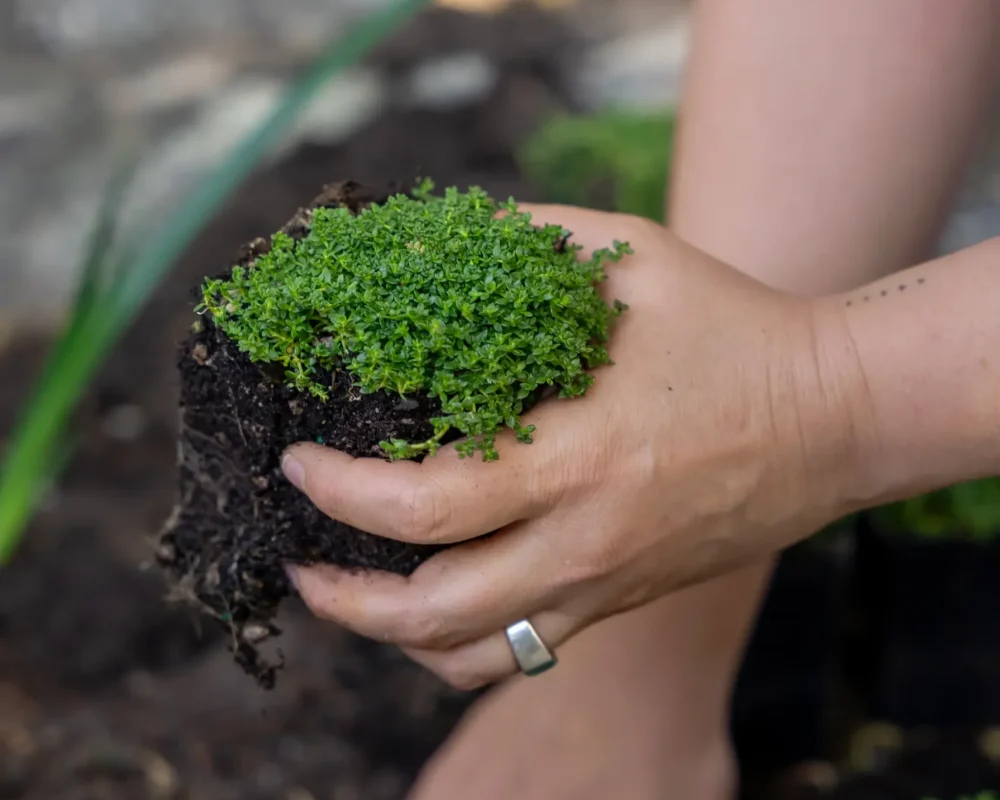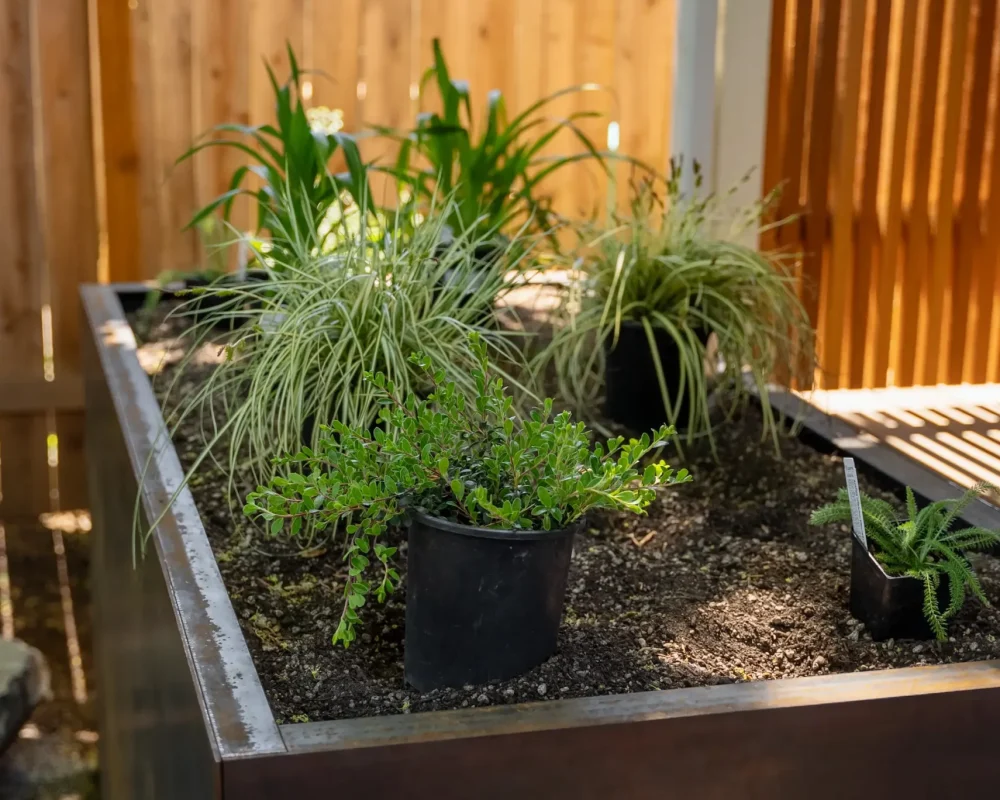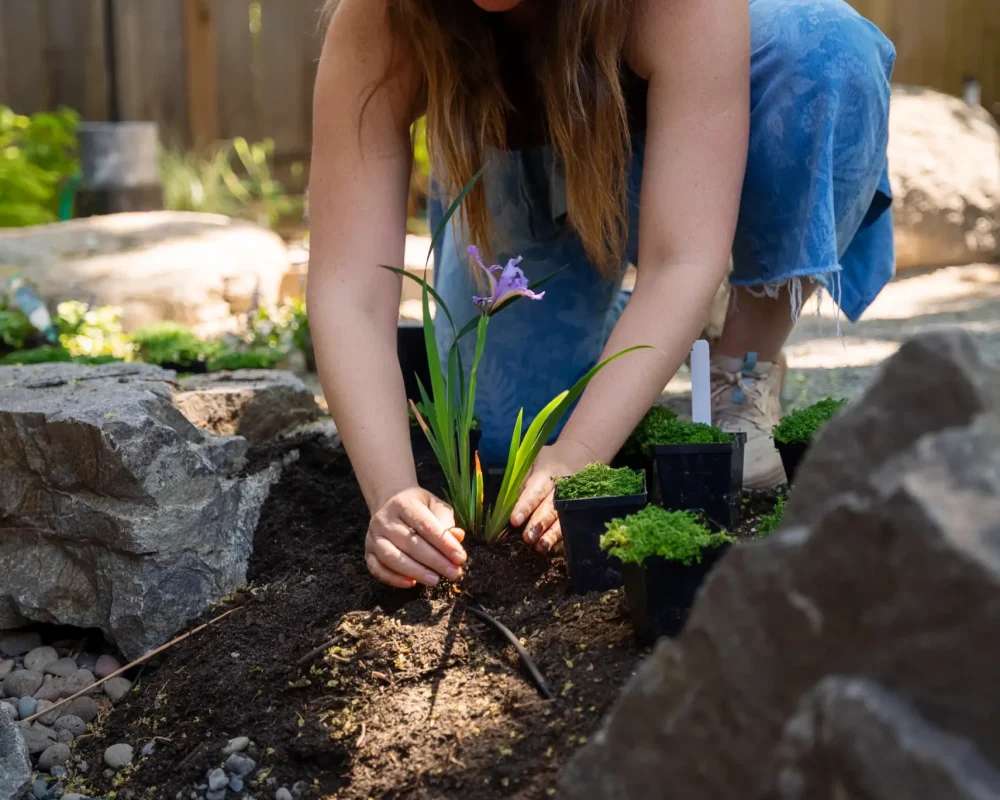When a homeowners asks us how to give their deck a greener, softer edge without sacrificing safety, our favorite answer is planter-box railings. A welded-steel box bolted to the frame can meet code, while turning the deck into living architecture. We sat down with Brit, our go-to landscape designer from Blueprint Earth, and she said, “This is a pretty small space and you want whatever plants you choose to actually work for you.”
Why swap the traditional railing for a living one?

- Meets deck railing requirements. In most cities/counties a residential deck that’s 30 inches or higher off the ground needs a 36 inch tall railing. The planter boxes we added for this project were sized so the finished soil line plus plant mass hit that height, while still respecting the 4 inch sphere rule for openings.
Visual softness. Steel, cable, or wood guardrails can feel busy. A single band of green is calm and cohesive.
Four-season privacy. Brit layers evergreen natives against seasonal bloomers, so even in January you’re not staring at an empty frame.
Extra utility. Herbs at hip height are easier to harvest, and wide caps can double as a cocktail perch.
How we build the boxes

We start with 1/8-in. Corten or powder-coated steel, welded into continuous troughs that bolt through the rim joist and tie back into blocking. The inside face aligns with the deck-board edge so water shears off cleanly. We leave the bottoms open to native soil. As Brit told us, “The soil structure lends to how a plant is going to thrive or not… roots, as they get very much established, can grow all the way into the clay soil down below.”
Inside each box is layered:
3-4 in. of ¾-in. washed rock for fast drainage.
A deep lift of a “three-way blend” topsoil amended with perlite or pumice.
Compost worked in at planting and refreshed every spring.
The open bottom prevents the dreaded perched-water table and lets earthworms migrate in.
Brit’s plant recipe for Portland decks
“Native kinnikinnick… grows over and it creates this really beautiful cascading effect over the edges of what is a really visually hard surface like steel.”
“We’ve got some zauschneria … and some daylilies… they bloom all summer long, so it can be a pretty good heavy hitter.”
“A creeping rosemary will also have that cascading effect… and then be something that you can bring in for culinary use.”
Group the evergreen anchors (kinnikinnick, rosemary) toward the outside lip so they spill over, then tuck the herbaceous color inside where the foliage hides after frost. That mix keeps pollinators happy from April through October and ensures the box never looks bare.
Coping with Portland’s climate extremes

Brit summed it up perfectly: “In Portland we have these raging hot summers… and then we have these cool, very wet, very gloomy winters.” Her strategy:
Choose natives acclimated to both extremes.
Prioritize evergreens for winter structure.
Mulch with a fine dark hemlock bark each fall—“It breaks down more quickly… starting to supply food to the soil underneath it.”
Water & maintenance cheat-sheet
Irrigation: Inline drip buried 2 in. down. Evaporation is higher on raised steel, so bump summertime runtime 10–15 %.
Feeding: Top-dress with ½ in. compost every spring, then scratch in an organic 5-5-5 if foliage pales.
Inspection: Each fall check that fasteners at the rim are tight and that soil hasn’t mounded above the interior weep slots.
Before you build
Local plan reviewers may ask for structural calcs showing the box resists the 200-lb concentrated lateral load that a standard guardrail must take. We model the box as a cantilevered beam and over-build our brackets. If your deck is under 30 in. above grade, you have more freedom, but we still design railings to code for peace of mind.
Ready for a greener edge?
We’d love to collaborate—just like we did with Brit—on a planter-rail that fits your deck, your climate, and your style. Let’s replace bare railings with blooms, texture, and year-round life.
